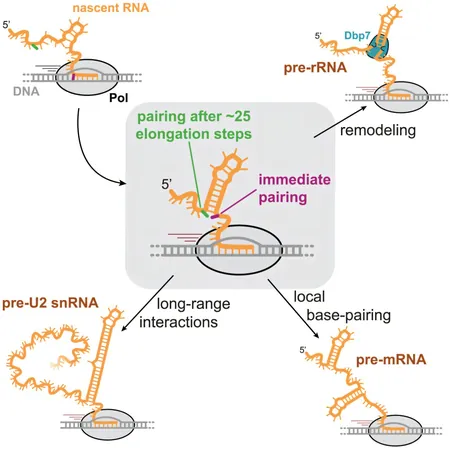
Unlocking the Secrets of RNA: A Breakthrough in Understanding Early Folding Stages
2025-05-06
Author: Sarah
The Fascinating World of RNA Folding
RNA molecules play a pivotal role in synthesizing proteins and ensuring proper cellular functions. Yet, their journey begins with a complex series of folding events that determine their structures and functions in genetic expression.
A Game-Changing Discovery at Yale
In a groundbreaking study published in *Molecular Cell*, Yale researchers have unveiled a novel technique that allows real-time mapping and measurement of RNA structure during its earliest stages. This innovation could pave the way for developing enhanced treatments for a range of diseases by targeting RNA during its formative phase.
Why RNA Structure Matters
The structure of RNA is crucial to its function. Whether it’s acting as transfer RNA (tRNA), ribosomal RNA (rRNA), or messenger RNA (mRNA), each type is integral to how genetic information is expressed in living organisms. Disturbances in this delicate folding process can lead to disease, emphasizing the importance of understanding these early structural changes.
Innovative Method: CoSTseq
The Yale team's innovation, termed co-transcriptional structure tracking (CoSTseq), harnesses two biochemical principles to isolate RNA during synthesis. This method allows researchers to modify and analyze the growing RNA molecules, providing insight into how they fold at the onset of their existence.
Revolutionary Insights into Folding Dynamics
Their findings reveal that RNA begins to fold the moment it emerges from the RNA polymerase—the enzyme responsible for its synthesis. This immediate folding is critical for healthy gene expression, hinting at new avenues for tackling diseases linked to RNA misfolding.
Distinct Folding Behaviors in RNA Types
The study highlights distinct differences in how various RNA types fold early on. For mRNA, the initial folding shapes dictate the final structure, setting the molecular course from the very beginning. Conversely, rRNA undergoes temporary folding changes before reaching its final form, a process influenced by the helicase enzyme Dbp7, which is essential for remodeling the rRNA.
Implications for Future Research
According to Leonard Schärfen, the lead author and Ph.D. candidate, this cutting-edge method not only illuminates previously unknown aspects of RNA folding but also indicates potential therapeutic targets that could act on early RNA forms. Senior author Karla Neugebauer praises the research as a "technical tour de force," emphasizing its potential to transform our understanding of gene regulation.
This groundbreaking work opens doors to new scientific inquiries and could lead to significant advancements in treating genetic disorders linked to RNA structures.


 Brasil (PT)
Brasil (PT)
 Canada (EN)
Canada (EN)
 Chile (ES)
Chile (ES)
 Česko (CS)
Česko (CS)
 대한민국 (KO)
대한민국 (KO)
 España (ES)
España (ES)
 France (FR)
France (FR)
 Hong Kong (EN)
Hong Kong (EN)
 Italia (IT)
Italia (IT)
 日本 (JA)
日本 (JA)
 Magyarország (HU)
Magyarország (HU)
 Norge (NO)
Norge (NO)
 Polska (PL)
Polska (PL)
 Schweiz (DE)
Schweiz (DE)
 Singapore (EN)
Singapore (EN)
 Sverige (SV)
Sverige (SV)
 Suomi (FI)
Suomi (FI)
 Türkiye (TR)
Türkiye (TR)
 الإمارات العربية المتحدة (AR)
الإمارات العربية المتحدة (AR)